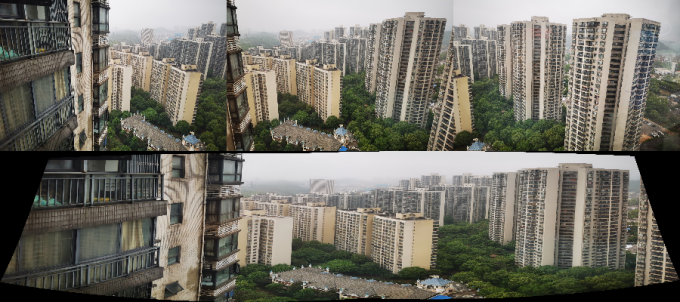'''
https://www.pyimagesearch.com/2018/12/17/image-stitching-with-opencv-and-python/
'''
from imutils import paths
import numpy as np
import argparse
import imutils
import cv2
ap = argparse.ArgumentParser()
ap.add_argument("-i", "--input", type=str, required=True,
help="path to input directory of input to stitch")
ap.add_argument("-o", "--output", type=str, required=True,
help="path to the output image")
ap.add_argument("-c", "--crop", type=int, default=0,
help="whether to crop out largest rectangular region")
ap.add_argument("-t", "--type", type=str, default="d",
help="type of the input, 'd' is directory, 'v' is video")
args = vars(ap.parse_args())
images = []
if args["type"] == "d":
print("[INFO] loading images...")
imagePaths = sorted(list(paths.list_images(args["input"])))
for imagePath in imagePaths:
image = cv2.imread(imagePath)
images.append(image)
print("[INFO] stitching images...")
elif args["type"] =="v":
cap=cv2.VideoCapture(args["input"])
Num = 0
while Num < cap.get(cv2.CAP_PROP_FRAME_COUNT):
Num += 1
if Num % 1 == 0:
ret,frame=cap.read()
images.append(frame)
stitcher = cv2.createStitcher() if imutils.is_cv3() else cv2.Stitcher_create()
(status, stitched) = stitcher.stitch(images)
if status == 0:
if args["crop"] > 0:
print("[INFO] cropping...")
stitched = cv2.copyMakeBorder(stitched, 10, 10, 10, 10,
cv2.BORDER_CONSTANT, (0, 0, 0))
gray = cv2.cvtColor(stitched, cv2.COLOR_BGR2GRAY)
thresh = cv2.threshold(gray, 0, 255, cv2.THRESH_BINARY)[1]
cnts = cv2.findContours(thresh.copy(), cv2.RETR_EXTERNAL,
cv2.CHAIN_APPROX_SIMPLE)
cnts = imutils.grab_contours(cnts)
c = max(cnts, key=cv2.contourArea)
mask = np.zeros(thresh.shape, dtype="uint8")
(x, y, w, h) = cv2.boundingRect(c)
cv2.rectangle(mask, (x, y), (x + w, y + h), 255, -1)
minRect = mask.copy()
sub = mask.copy()
while cv2.countNonZero(sub) > 0:
minRect = cv2.erode(minRect, None)
sub = cv2.subtract(minRect, thresh)
cnts = cv2.findContours(minRect.copy(), cv2.RETR_EXTERNAL,
cv2.CHAIN_APPROX_SIMPLE)
cnts = imutils.grab_contours(cnts)
c = max(cnts, key=cv2.contourArea)
(x, y, w, h) = cv2.boundingRect(c)
stitched = stitched[y:y + h, x:x + w]
cv2.imwrite(args["output"], stitched)
cv2.imshow("Stitched", stitched)
cv2.waitKey(0)
else:
print("[INFO] image stitching failed ({})".format(status))
|









